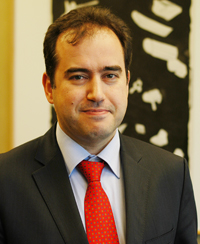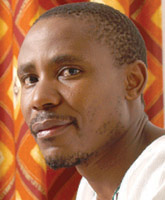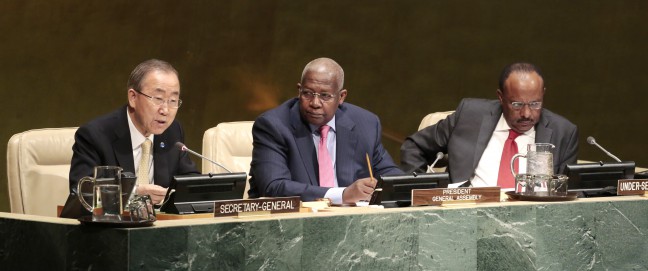At the end of last October, David Callahan, editor of the Inside Philanthropy blog, posted his five ‘scariest’ trends in philanthropy. Callahan’s ‘trends’ all relate to philanthropy in the US. Are these specifically US trends, we wondered, or are they happening more widely? In either event, how scary are they? We asked a number of observers from around the world – from India, Mexico, the Philippines, Portugal, Russia, South Africa and the UK – for their reactions. In spite of Callahan’s injunction to ‘be afraid’, few of them seem inclined to quake in their boots, even where they see similar tendencies in their own countries.
First of all, a brief summary of Callahan’s trends:
- The growing push to convert wealth into power through philanthropy The ‘footprint of private money’ has grown in many aspects of US life, particularly education.
- How philanthropic dollars have become another form of political money While philanthropic money has always been used to influence policy, now more money – and therefore potentially more influence – is involved.
- The decline of the public sector relative to private funders Cuts in public sector spending mean increased clout for private funders.
- The rise of the know-it-all funder ‘Hands-on living mega donors’ also bring with them the possibility of ‘big screwups’.
- A rising flood of anonymous money The lack of transparency has particularly worrying implications for political funding.
All these trends, he argues, chip away at the democratic basis of American life and institutions. How did our respondents view them?
The growing push to convert wealth into power through philanthropy
Lourdes Sanz of Cemefi (Mexican Center for Philanthropy) is inclined to agree that some of the trends observed in the US ‘are also applicable to Mexico and Latin America’.
The most disconcerting of these, she feels, is the power acquired by big funders through their grants and their problem-solving abilities.
‘I wish it was the case,’ says Maria Chertok of CAF Russia. In Russia, she says, private philanthropy is ‘far too insignificant to have real influence on the course of the country’. She adds that this lack of influence is sometimes no bad thing. Some of the donors’ agendas ‘are clearly conservative (for example, anti-abortion) and are presented as driven by “traditional values”.’
For Rui Esgaio of the Calouste Gulbenkian Foundation, the considerable differences in the Portuguese and US philanthropy landscapes undermine any comparison of trends. Primarily, he says, certain key activities of the Portuguese foundation sector ‘depend significantly on government support, in the form of contracts that cover part of their costs, which means that private foundations with private funds are in fact very few’. So Callahan’s private money footprint is negligible in Portugal.
However, says Esgaio, new actors are emerging, ‘especially new private corporate funders of public causes, using vehicles such as corporate foundations or social responsibility programmes’. But he does not see this as disturbing, much less scary; in fact he sees this civic engagement from companies, often in cooperation with the government, as ‘very welcome and necessary’. Overall, the presence of government in all societal fields is much stronger than in the US.
For Bhekinkosi Moyo of the Southern Africa Trust, the association of wealth and power is nothing new in Africa: ‘Because of the nature of inequalities, the presence of big man syndrome and the patronage it brings along, as well as the crude marriage between politics and business, those with money and wealth have always wielded a lot of power. This is part and parcel of the life that we are accustomed to, and as such we don’t see these as trends that are scary but as part of the political, environmental and cultural milieu.’
How philanthropic dollars have become another form of political money
While African philanthropists might not have reached the stage where they can directly influence policies, says Moyo, ‘there is no doubt that they wield a lot of power, which power is very much linked to politics, culture and the economy.’
If it’s not new, is it disturbing? He doesn’t think so. ‘Philanthropic dollars have always been another form of political money in my view. Africa and her countries have always received a lot of aid, and support from international philanthropic institutions. The majority of this support has always been political in that it supported some of the critical social justice issues. One cannot support social justice and avoid politics.’ Nor is it, in his view, a threat to democracy: ‘I really think context matters and for Africa for now, it is important for all forces to push for specific public policy advocacy.’
Dhaval Udani, until recently with GiveIndia, agrees and is still more categoric about it: ‘I really don’t see these as issues – I have read about all of this in the American context but haven’t been able to place them in the Indian context.’ He notes that this may be partly to do with the fact that ‘philanthropists in India are by and large held in much greater regard than politicians or bureaucrats. There is wide acceptance that most philanthropists have earned their money through legitimate means and not by exploiting others; many are considered statesmen in India (eg Azim Premji, Nandan Nilekani, Narayan Murthy). If they are influencing and changing public policy, it’s for the better since the politicians are really not putting much thought into it.’
‘Philanthropic money is not anywhere near politics,’ says Maria Chertok. ‘This would be far too risky given the Khodorkovsky case. Government would not tolerate it.’
Nor does much money go towards shaping public policy in Portugal, says Rui Esgaio. Moreover, where this does happen, he doesn’t feel Callahan’s criticism is fair. The Gulbenkian Foundation, he says, ‘positions itself as a private foundation with an interest in promoting public debate, connecting different actors (private/public) and, at the end of the day, aiming to influence public policy. If this effort is completed in a transparent and inclusive way, including bringing to the discussion different or even opposite perspectives … it is not fair to judge our work as a corrosion of democratic ideals and in fact undervalues our convening role.’ Foundations, he argues, are part of civil society, and as such they have a legitimate say in public policies that affect them and their stakeholders.
Marianne Quebral of the Asian Institute of Management likewise notes ‘few, if any’ occasions where ‘donation dollars were intended to influence policy’. In fact, she believes that ‘the reverse seems to be the practice in many parts of Asia: political/public money has been reallocated as philanthropy.’
What about the UK? ‘Political philanthropy has already arrived in the UK,’ says Charles Keidan, Philanthropy Practice Research Fellow at City University London. ‘As much as we try to distinguish between direct private funding of political parties and individual politicians, which is not philanthropic in legal terms, and funding of think-tanks, which is, the truth is that they are both means by which private money shapes and influences public policy by advancing specific private visions of the public good – irrespective of whether those visions are on the right, left or centre of the political spectrum.’ Whether this is a cause for alarm, he suggests, depends on how you view ‘the emergence of a US style plutocratic pluralism that is set to increasingly shape the arena in which public life is conducted’.
A danger of hypocrisy?
While many see the influence of philanthropy on policy as beneficial – so long as it’s in the service of a cause they approve – Charles Keidan is aware of the potential for hypocrisy here. Progressive funders, he notes, are quick to accuse conservative funders of bypassing the democratic process and exerting undue influence but they ‘should be worried about the intellectual and ethical inconsistency of favouring public policy influence when they are sympathetic to the cause and condemning it when they aren’t. After all, “What is sauce for the goose is sauce for the gander”.’
Overall, he feels, the conservatives will win ‘in the clash of the plutocrats because they are instinctively more committed to free-market economics and making money’. In that sense, he believes, ‘philanthropy is fundamentally more about freedom than social justice and thus the posture of progressive philanthropy is destined to sometimes look hypocritical, uncomfortable, or at least slightly awkward.’
The decline of the public sector relative to private funders
In Africa, ‘the public sector might be under stress but I don’t think it has declined relative to private funders’, says Bhekinkosi Moyo. While little funding so far comes from local funders, ‘we are yet to see private funders stepping in to close the public gap.’
Maria Chertok draws a similar picture. While she concedes that ‘in principle’ Russian philanthropy has taken on the task of funding new ideas, in practice most funding still goes to basic needs or to the support of state institutions. However, as in many other places, the private sector has taken up some of the duties of service provision that used to be the preserve of the state, though when and if this should happen is still the subject of ‘endless debate’.
Portugal, more than many others, has felt the force of public spending cuts since the joint bail-out of its economy by the European Union, the International Monetary Fund and European Central Bank, and has seen a consequent ‘higher demand for private funders’, as Rui Esgaio notes. Although attempting to offset shortfalls in state spending is not viable, there is, he says, ‘a greater concern with very urgent issues such as youth unemployment’. The Gulbenkian Foundation has started an initiative ‘to promote youth training opportunities (internship programmes) in partnership with the Public Employment Agency’.
In East Asia, says Marianne Quebral, ‘while there are concerns that private donations have become expected and public allocations have diminished’, this is welcome in ‘a region where social needs are immense’. Moreover, in the Philippines, she says, ‘budget allocations under the present regime for education, health and public works are at an all-time high’ – an increase which, she argues, ‘signifies the continued acceptance that government plays the key role in providing resources for social programmes’.
In Mexico the philanthropic sector exerts little influence on the state, says Lourdes Sanz: ‘successful private initiatives are not taken into consideration or scaled by the government, nor are the lessons they learn taken into consideration in government social programmes.’
The rise of the know-it-all funder
For Sanz, this is an issue that has resonance in Mexico: ‘we see more and more how highly skilled individuals in the business or political fields believe they have all the answers and try to have civil society organizations or community groups follow their lead in the solution of different issues in which they do not have enough experience or information.’
Marianne Quebral, too, acknowledges that many Asian philanthropists ‘come from successful businesses and have achieved their wealth by running these businesses efficiently and effectively. There is a great temptation, and appropriateness, to transfer this knowledge to solving social problems and needs.’ However, she perceives a willingness on the part of donors, particularly corporate donors, to learn from non-profits. More likely to fall into the know-all category, she thinks, are ‘institutional funders, armed with international experience, who will often recommend the transfer of technology from one country to the next while dismissing the local nuances’.
Maria Chertok says this is ‘definitely an issue’ in Russia. However, she sees reason to be optimistic in some cases at least, believing that ‘serious funders who have started their own foundation learn as they develop, become more consultative, and learn how to listen to their constituencies and experts in the field’.
A rising flood of anonymous money
Several of our respondents don’t see anonymity in giving as anything to worry about. People may have ‘personal reasons not to make their giving known’, says Chertok. ‘This is what religion suggests, for example. Also in Russia there are many causes that are unpopular (LGBT, human rights, anti-corruption and so on) and the only way for donors who are known to the public to give is to do it anonymously.’
Nor does Rui Esgaio see sinister overtones in the practice of anonymous giving, feeling that it has more to do with ‘a different culture of giving in the US (or in the wider Anglo-Saxon world) in comparison with Portugal and other European countries, where discretion and a lack of public recognition is socially more appreciated.’
Giving ‘has remained quite public in Asia’, believes Marianne Quebral, to the extent that, in several campaigns she has run, ‘a very small 1 per cent, if not less, request anonymity’. This is generally for practical reasons, she thinks, donors ‘protecting themselves from others asking them for more gifts. Sometimes, anonymity also protects the donor from being kidnapped and the threat of a visit from the taxman!’
Bhekinkosi Moyo also notes that there might be ‘very good reasons for anonymity in giving, especially in volatile and fluid contexts like ours’.
An alternative view from the US?
Many of our respondents have noted how different the US experience is from their own. Would another US observer see the same picture as David Callahan?Melissa Berman of Rockefeller Philanthropy Advisors acknowledges that he ‘raises extremely important points about the power of private philanthropy’. She notes that, in the US, ‘we’ve separated charitable giving from political activity in a fairly fluid way. Sometimes there’s not much dividing pure political activity from advocacy, issue campaigns, policy work, public engagement, issues research, education, and other sometime euphemisms.’
But in her view these trends are not new to US philanthropy. For example: ‘in ’09 a very wealthy donor was pushing his vision of public health on a poor part of the world, prioritizing the disease he focused on. A couple of years later in ’11 another really rich donor essentially bribed municipalities to co-fund his version of education innovation.’ No, not 2009 and 2011: ‘I’m talking about John D Rockefeller’s public health work in the rural south of the US in 1909, and Carnegie’s public library initiative beginning around 1911.’
She also takes issue with Callahan’s assertion that the influence at stake is now potentially greater, since the sums involved are larger. So they may be in dollar amounts, but, she argues, ‘in current dollars, John D Rockefeller would be worth about $500 billion. By 1937, his wealth is estimated to have accounted for about 1.5 per cent of US GDP. That’s way, way more than Bill Gates and Warren Buffett combined. Also important is the relative size of government spending in the US, which was around $17 billion (and a much smaller share of GDP) in Carnegie and Rockefeller’s era. Their programmes loomed larger in the landscape.’
Afraid? Not us!
Most of our respondents think that, so far as their regions are concerned, David Callahan’s scariest trends are either not trends or not new, and in any case not scary. Even where similar tendencies are discerned, the limited role played by philanthropy means they offer little cause for disquiet; in some cases, they are seen as positive rather than alarming. Even for Melissa Berman, also in the US, where philanthropy waves a bigger stick, wary and aware, rather than afraid, would be the watchwords: ‘Wary about how our social compact may be evolving without much public discussion, but aware that the sweep of US history suggests that this is already a century-long phenomenon.’
Alliance would like to thank the following for their contributions to this article:
Melissa Berman, Rockefeller Philanthropy Advisors, USA
Maria Chertok, CAF Russia
Rui Esgaio, Calouste Gulbenkian Foundation, Portugal
Charles Keidan, City University London,UK
Bhekinkosi Moyo, Southern Africa Trust, South Africa
Marianne Quebral, Asian Institute of Management, Philippines
Lourdes Sanz, Cemefi, Mexico
Dhaval Udani, India
Lead image: Creative Commons photo courtesy flickr user Images_of_Money.
Andrew Milner is Alliance associate editor. Email am@andrewmilner.free-online.co.uk













Comments (0)